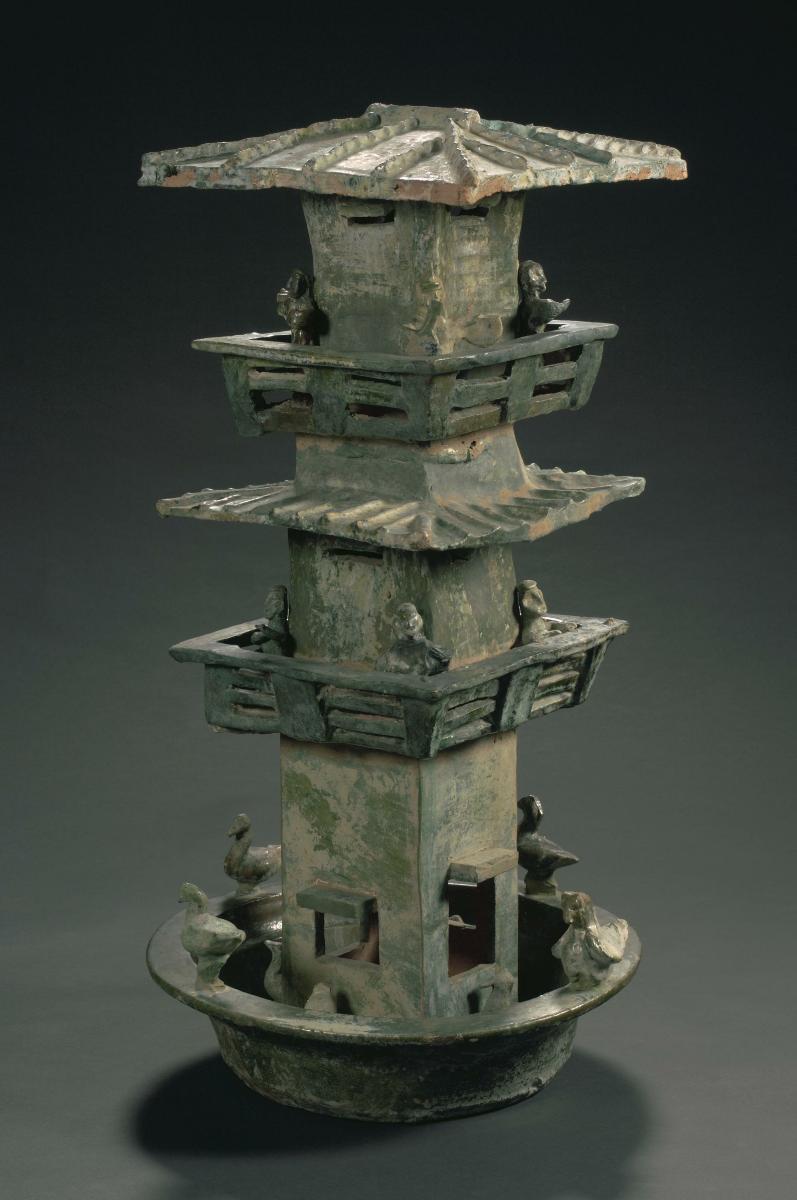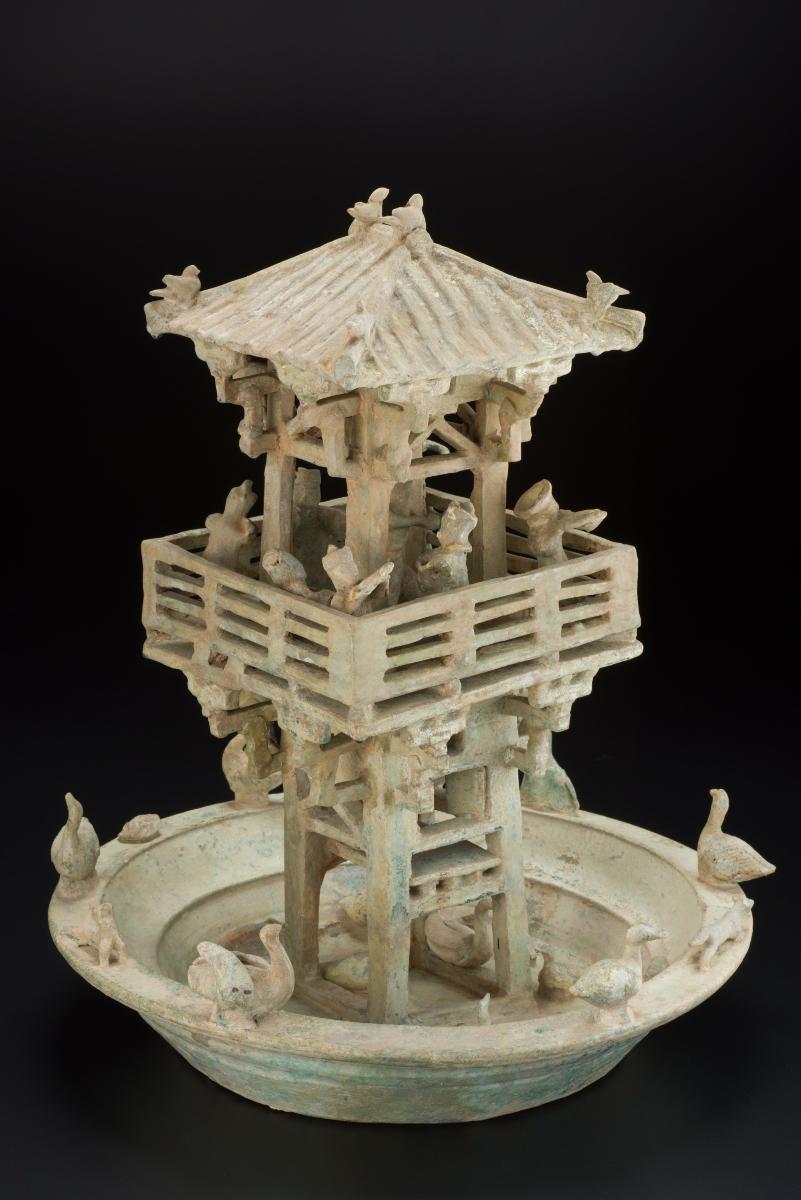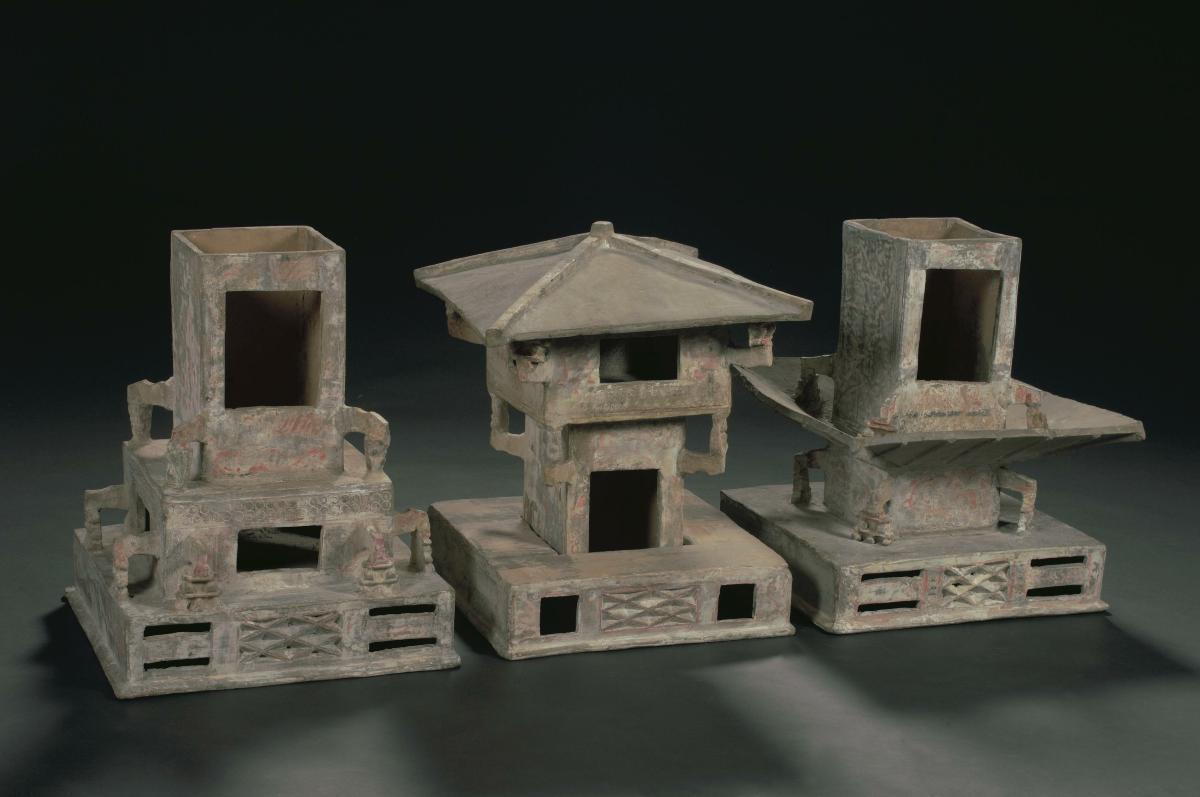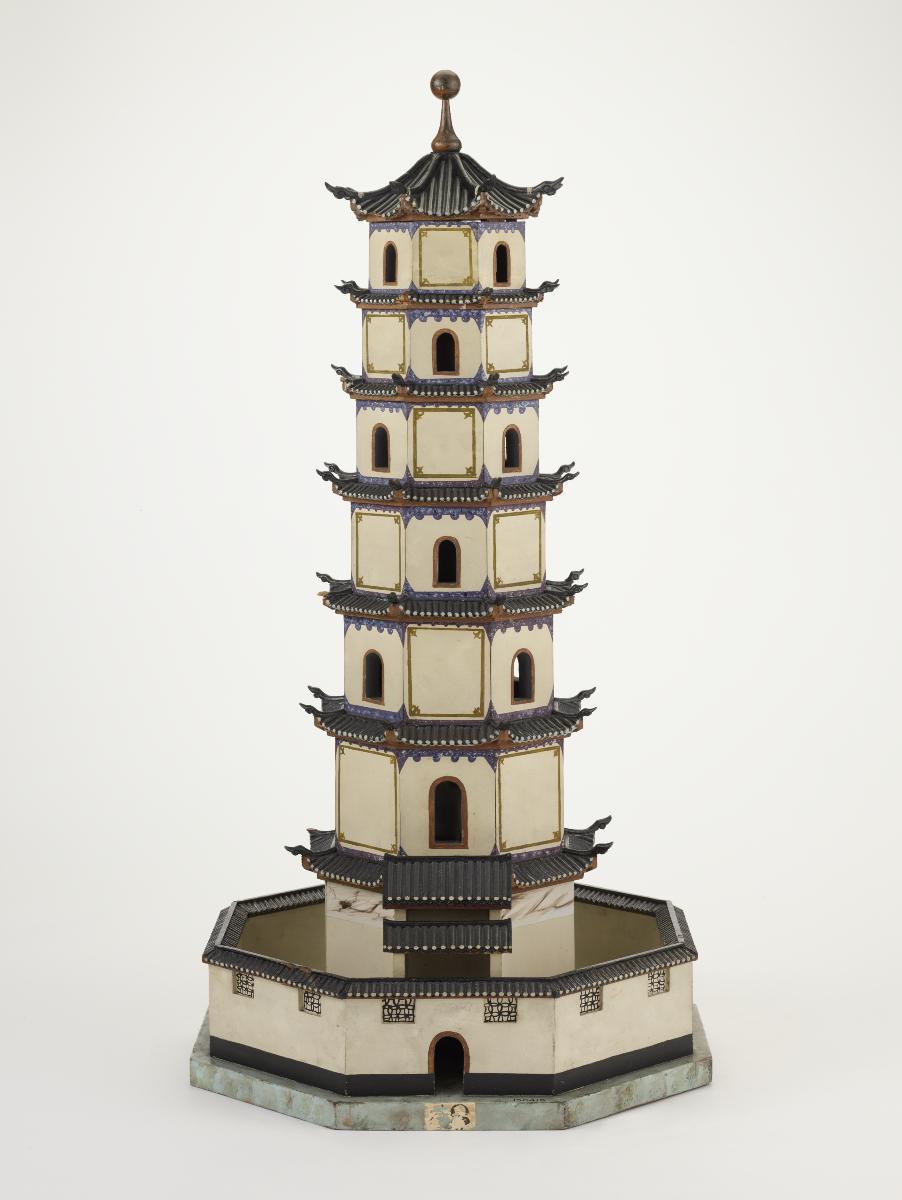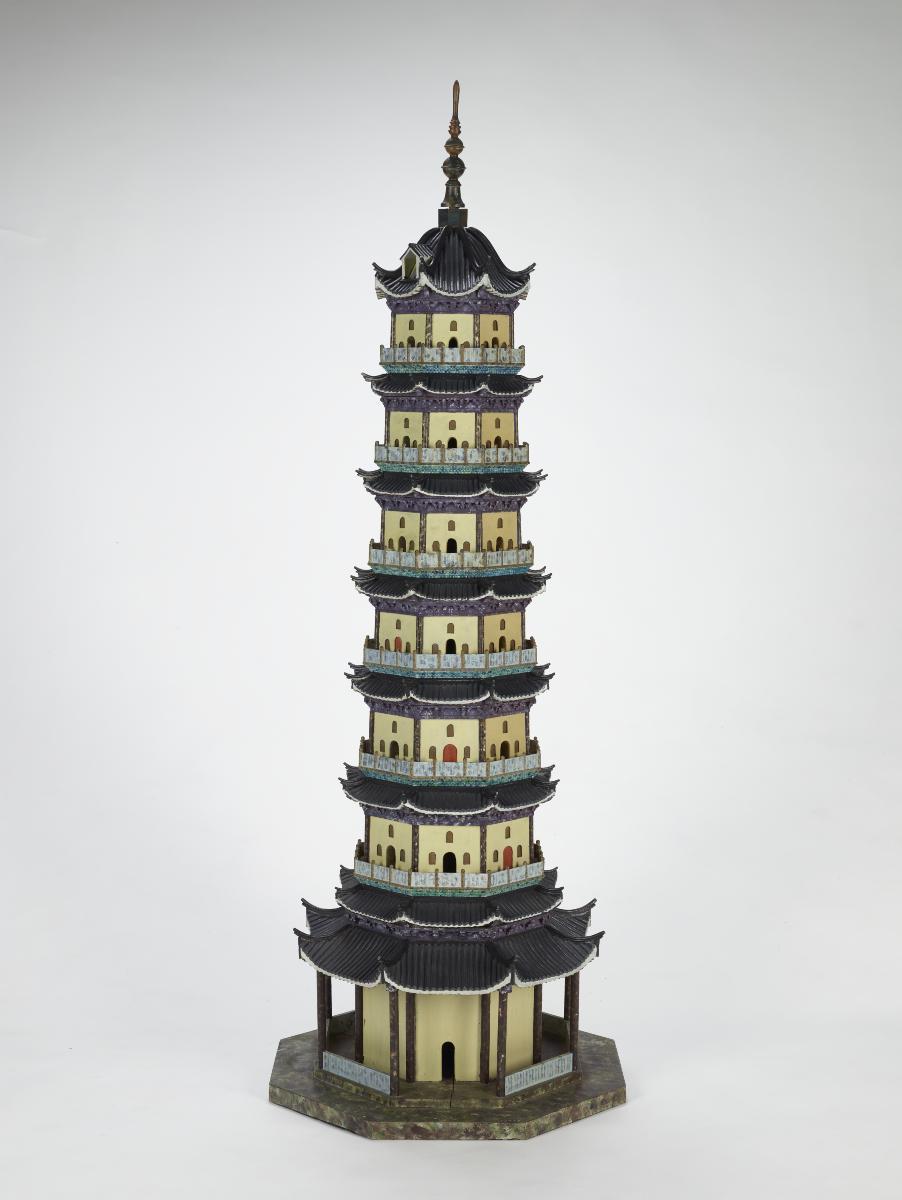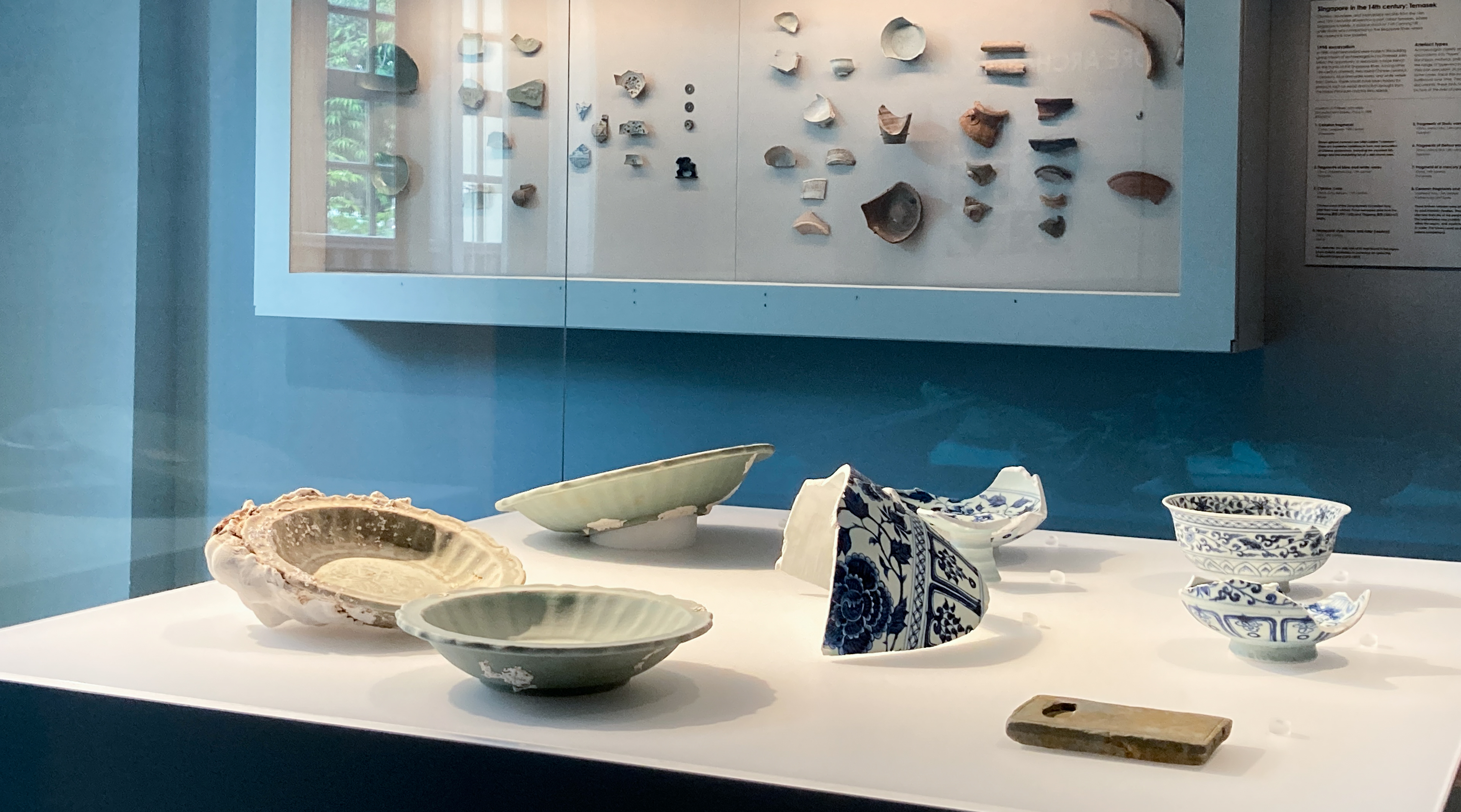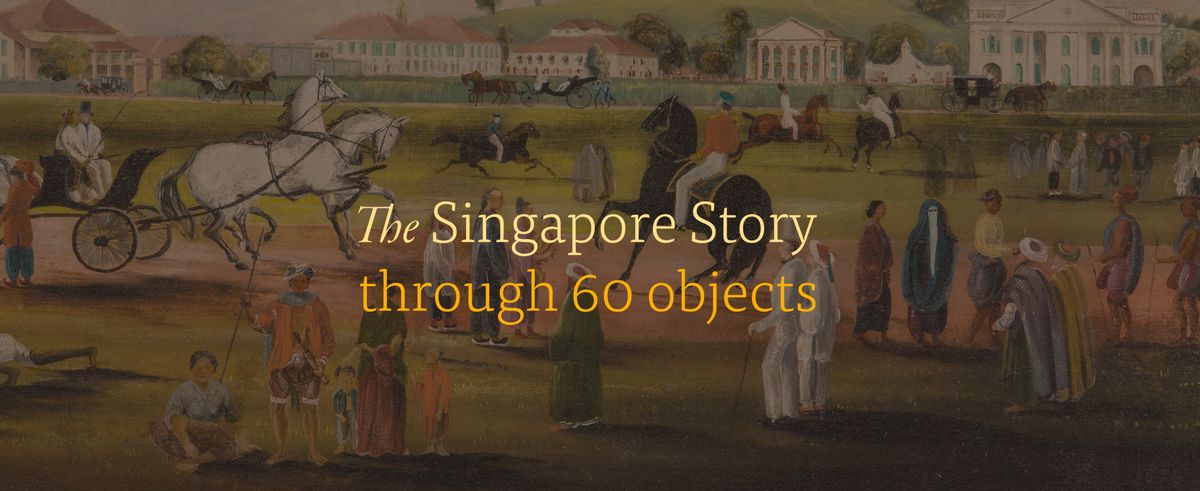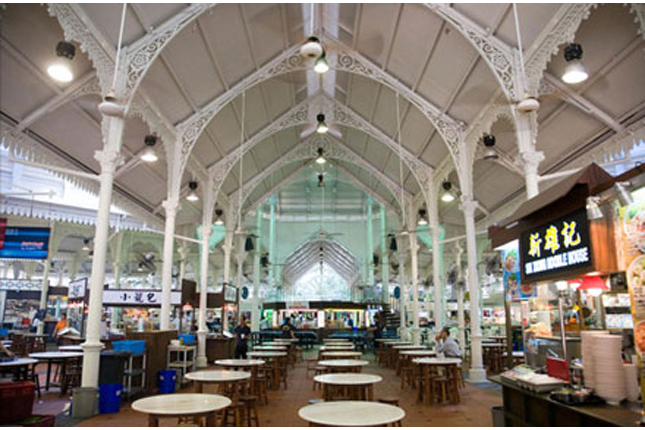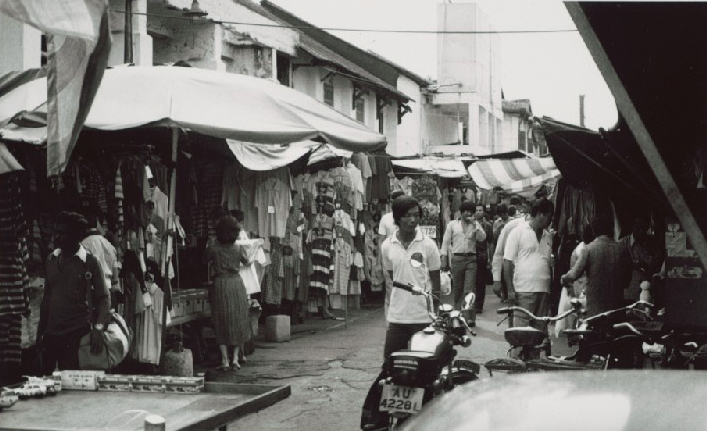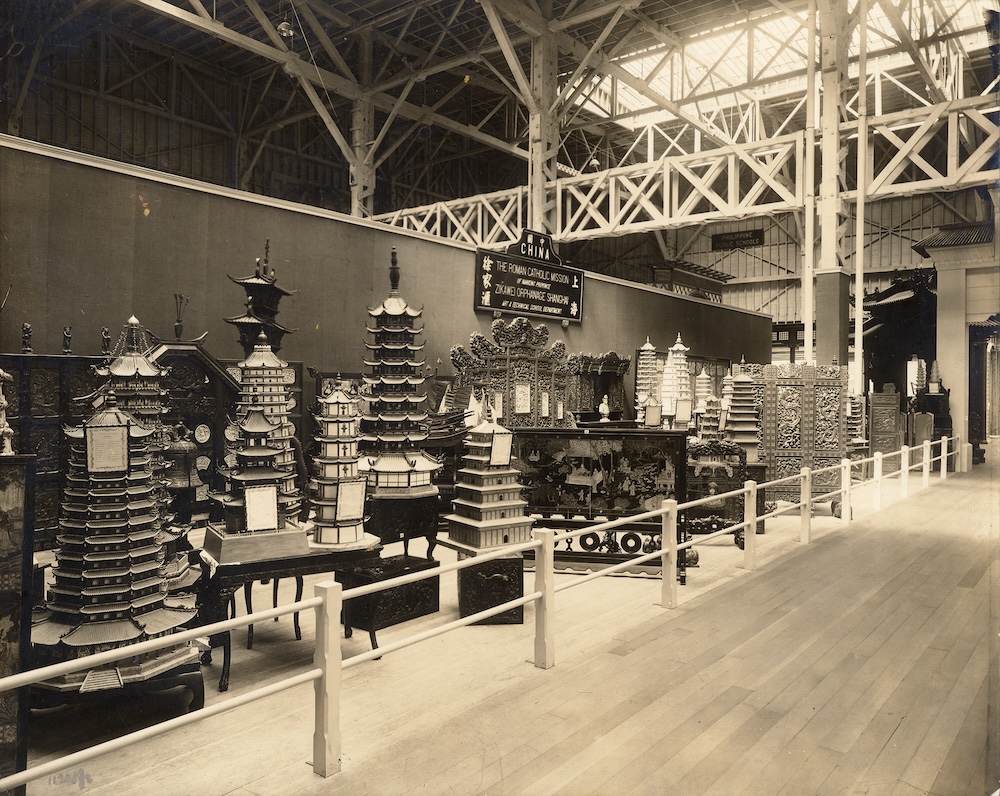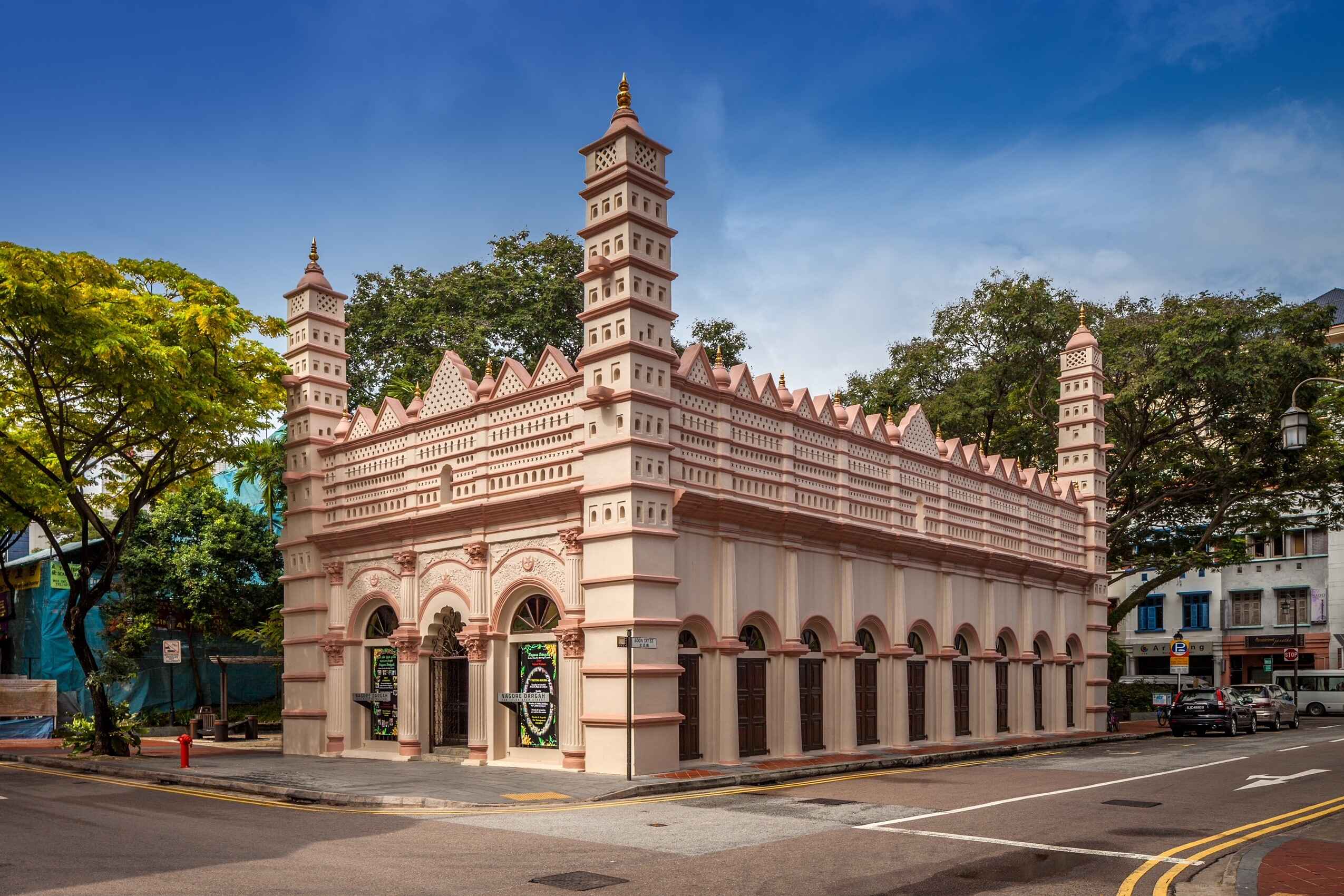This dark green iridescent glazed watch tower model served as burial ware or ‘mingqi'. Composed of eight separate pieces stacked on top of one another, this three-storey watch tower sits in a deep basin representing a moat. Models of ducks, fish, and a chicken are visible from inside the moat. The two upper storeys have projecting balconies with cut-out railings. Human figures stand at each corner of the balconies. For practical reasons of support, the roof of the middle storey is made into a square pedestal so that the storey above may sit securely. Pieces such as this give an indication of the elaborateness of later Han architecture.The practice of using lead-glazed burial wares had already started during the Han dynasty (206 BCE-220 CE) and it continued into the Ming period (1368-1644). The custom of burying objects with the deceased stems from the belief in life after death.




